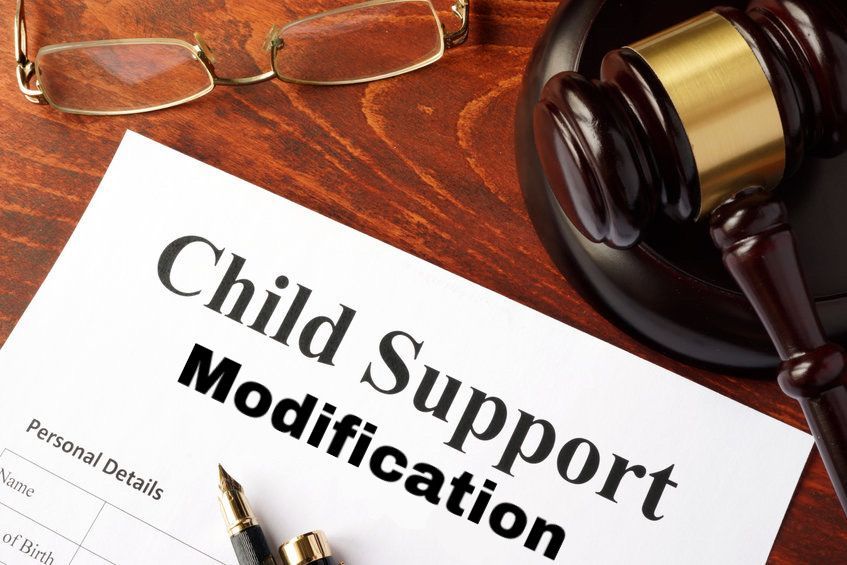How Much Can You Get Out of Pain and Suffering?
Most people receive between $5,000 and $100,000 for pain and suffering in personal injury cases, though the amount varies widely based on injury severity. Minor injuries typically settle for $5,000 to $15,000, moderate injuries range from $20,000 to $50,000, and severe or permanent injuries often exceed $100,000. The national median settlement is around $25,000. Your compensation depends on factors like how badly you were hurt, how long you suffered, the impact on your daily life, and the strength of your medical documentation. Serious injuries involving permanent disabilities, brain damage, or spinal cord injuries can result in settlements of several hundred thousand dollars or more.
What Is Pain and Suffering in a Personal Injury Case?
Pain and suffering is the term lawyers use for all the hurt and trouble you go through after someone else causes you harm. It's not just about your medical bills or lost pay. It's about the aches, the sleepless nights, the things you can't do anymore, and the worry that won't go away.
Physical Pain and Suffering
This is the actual hurt in your body. It includes:
The sharp pain right after the accident. The dull aches that stick around for weeks or months. The trouble moving like you used to. Headaches that won't quit. The need to take pain pills just to get through the day. Scars that remind you of what happened every time you look in the mirror.
Some injuries hurt for a few weeks and then get better. Others cause pain that lasts for years or even forever. The law treats these differently because long term pain affects your whole life.
Emotional Pain and Suffering
Your mind and heart hurt too after an accident. This includes:
Fear of getting in a car again after a crash. Sadness or depression because you can't do what you love. Worry about money when you can't work. Stress from dealing with insurance companies and doctors. Trouble sleeping because you keep thinking about what happened. Feeling embarrassed about scars or injuries others can see.
Many people don't realize that these feelings count as damages. But they do. Your emotional health matters just as much as your physical health in a personal injury case.
Loss of Enjoyment of Life
When injuries stop you from doing things you used to love, that's another type of suffering. Think about:
Not being able to play with your kids. Missing out on your favorite sports or hobbies. Skipping family gatherings because you hurt too much. Giving up activities that made you happy. Having to quit a job you loved.
All of these losses have value, and you can ask for money to make up for them.
How Much Money Can You Actually Get?
There's no simple answer because every case is different. But we can look at what usually happens to give you a good idea.
Average Settlement Amounts by Injury Type
Research shows that pain and suffering payments follow some general patterns. Here's what people typically receive:
Minor Injuries: $5,000 to $15,000 These are injuries like sprains, bruises, or broken bones that heal in a few months. You might miss a little work and have some pain, but you bounce back pretty well. Most people in this group get around $10,000 for their suffering.
Moderate Injuries: $20,000 to $50,000 These injuries need more treatment and take longer to heal. You might need surgery or months of physical therapy. The pain sticks around longer, and you miss more work. Many people in this range get about $35,000.
Severe Injuries: $100,000 or more Serious injuries that change your life forever fall into this group. This includes things like spinal cord damage, brain injuries, or losing the use of a limb. Some people get several hundred thousand dollars, especially if they can never work again or need care for the rest of their life.
According to national data, the median settlement for pain and suffering across all cases is about $25,000. But remember, that's the middle number. Half of people get more, and half get less.
Real Settlement Examples
Looking at actual cases helps you see what's possible:
A person with a broken wrist and concussion from a car accident got $22,500 for pain and suffering on top of $6,000 in medical bills. The total settlement was about $30,000.
Someone with serious back and neck injuries after being hit by a delivery truck received $505,025. This included both medical costs and pain and suffering.
Five people hurt in a severe crash with disc problems, broken ribs, and head injuries shared a $1.9 million settlement.
A person who fell on a wet floor and hurt their lower back got $25,000. They had trouble working and walking for many months.
These numbers show how much the payout can vary based on what happened to you.
How Do Lawyers and Insurance Companies Calculate Pain and Suffering?
Since there's no price tag on suffering, people use different methods to come up with a number. Understanding these methods helps you know what to expect.
The Multiplier Method
This is the most common way to figure out pain and suffering damages. Here's how it works:
First, you add up all the money you spent because of the injury. This includes doctor bills, hospital stays, medicine, physical therapy, and wages you lost by missing work. Let's say that total is $20,000.
Next, you multiply that number by something between 1.5 and 5. The multiplier depends on how bad your injuries are.
Multiplier of 1.5 to 2: Minor injuries that heal fast Multiplier of 3: Moderate injuries with some lasting effects Multiplier of 4 to 5: Severe or permanent injuries
So if your medical bills were $20,000 and the lawyer uses a multiplier of 3, your pain and suffering would be worth $60,000. Your total claim would be $80,000 (the $20,000 in bills plus $60,000 for suffering).
The Per Diem Method
This method means "per day" in Latin. It works by putting a dollar value on each day you suffer.
You pick a daily rate, often based on what you earn per day at work. Let's say you make $300 per day. Then you count how many days you dealt with pain from the injury until you felt better or reached maximum medical improvement. This is the point where doctors say you've healed as much as you're going to.
If you suffered for 180 days, you multiply $300 times 180, which equals $54,000 for pain and suffering.
This method works better for injuries that heal completely over time. It's harder to use when pain lasts forever because the numbers get too big.
The Insurance Company Formula
Insurance companies have their own computer programs to calculate what they think your claim is worth. They won't always tell you exactly how they do it, but they look at:
Your medical bills and treatment records. How long you were hurt. Whether you have permanent problems. Past cases similar to yours. How good your proof is.
Insurance companies usually start with a lower offer than what a jury might give you. That's why many people hire a lawyer to fight for more money.
What Factors Affect How Much You Get?
Many things can make your pain and suffering payment go up or down. Knowing these factors helps you build a stronger case.
Severity of Your Injuries
This is the biggest factor. The worse you're hurt, the more money you can expect. A small cut heals fast and causes little suffering. But a broken back that never heals right changes your whole life.
Judges and juries give more money for:
Injuries that need surgery. Broken bones. Head or brain injuries. Spinal cord damage. Burns or scars. Nerve damage. Permanent disabilities.
These injuries usually mean more pain, more treatment, and more time away from normal life.
How Long You Suffer
Short term pain gets less money than long term or permanent suffering. If you hurt for three weeks and then feel fine, that's different from hurting every day for the rest of your life.
The longer you're in pain, the higher your settlement should be. That's why doctors ask you to wait until you reach maximum medical improvement before settling. You need to know the full extent of your suffering before you agree on a number.
Impact on Your Daily Life
Can you still do the things you used to do? If not, that increases the value of your claim. Insurance companies and juries want to know:
Can you work at your job? If not, can you do any job? Can you take care of yourself, or do you need help? Can you drive, cook, clean, or shop like before? Can you play sports or do hobbies you love? Can you enjoy time with family and friends?
The more your injury interferes with normal life, the more your pain and suffering is worth.
Medical Documentation
Strong medical records make a huge difference. You need doctors, nurses, and therapists to write down:
What injuries you have. How much pain you feel. What treatments you're getting. How well those treatments are working. What your future looks like.
Without good medical records, insurance companies will say you're not really hurt that bad. With detailed records, they have to take your suffering seriously.
Emotional and Mental Health Effects
If the accident caused mental health problems, that adds value to your claim. Get help from counselors or therapists who can document:
Depression. Anxiety. Post traumatic stress disorder. Sleep problems. Mood changes. Difficulty concentrating.
These professionals can write reports explaining how the accident affected your mental health. Their testimony helps prove your emotional suffering.
Your Age and Health Before the Accident
If you were young and healthy before getting hurt, your claim is usually worth more. A 30 year old athlete who can't play sports anymore loses more than someone who already had health problems.
But even if you had previous injuries or conditions, you can still get paid if the accident made things worse. The key is showing how much worse things got because of what happened.
Whether You Share Any Fault
In many states, if you were partly to blame for the accident, your payment goes down. For example, if you were 20% at fault for a car crash, you might only get 80% of what you would have gotten otherwise.
This is called comparative fault. It's important to show that the other person was mostly or completely responsible for what happened.
Quality of Your Evidence
The better your proof, the more money you'll get. Strong evidence includes:
Photos of your injuries right after the accident. Videos showing what you can't do anymore. A journal where you wrote about your pain every day. Statements from family and friends about how you've changed. Expert testimony from doctors and therapists.
People who document everything tend to get higher settlements than those who don't.
How to Prove Your Pain and Suffering
You can't just tell the insurance company you're hurting and expect them to believe you. You need to show them. Here's how to build a strong case.
Keep Detailed Medical Records
Go to the doctor right away after getting hurt, even if you think it's not that bad. Some injuries don't show up until days later. If you wait too long, the insurance company will say the accident didn't really hurt you.
Then keep going to all your doctor appointments. Missing appointments makes it look like you're not really suffering. Follow your treatment plan exactly as the doctor says.
Make sure your doctors write down:
Every symptom you have. How much pain you feel on a scale of 1 to 10. How the injury affects what you can do. What treatments they're giving you. How you're responding to treatment.
Ask for copies of all your records so you have them ready when you need them.
Write in a Pain Journal Every Day
Start a notebook or use your phone to record how you feel each day. Write about:
What time you woke up and how you felt. What hurts and how bad it hurts. What you tried to do but couldn't because of pain. How your mood was affected. What medicines you took. How the pain affected your sleep, work, or family time.
Do this every single day from the day you get hurt until your case settles. This journal becomes powerful proof of what you went through. It shows a pattern of suffering that's hard for anyone to deny.
Take Photos and Videos
Pictures tell a story that words sometimes can't. Take photos of:
Your injuries right after the accident. Bruises, cuts, swelling, or casts. How your injuries look as they heal. Scars that remain. Medical equipment you have to use, like crutches or a wheelchair.
Videos can be even more powerful. Record yourself trying to do simple things that are now hard, like:
Walking up stairs. Picking up your child. Getting dressed. Doing yard work. Playing with your pet.
These videos show the jury or insurance adjuster exactly what your life is like now.
Get Statements from People Who Know You
The people around you see how you've changed. Ask family members, friends, neighbors, and coworkers to write statements about:
What you were like before the accident. How they've seen you struggle since getting hurt. Activities you can't do anymore. Changes in your personality or mood. Times they've had to help you with things you used to do yourself.
These statements from people who care about you add weight to your claim. They show that your suffering is real and affects those around you.
Work with Mental Health Professionals
Don't ignore emotional pain. If you're feeling depressed, anxious, scared, or stressed, see a counselor or therapist. They can help you feel better, and they can also document your mental suffering.
Mental health records show that the accident didn't just hurt your body. It hurt your mind and emotions too. This adds to the value of your claim.
Consider Expert Witnesses
In bigger cases, your lawyer might hire experts to testify about your suffering. These can include:
Medical experts who explain how severe your injuries are. Vocational experts who talk about jobs you can't do anymore. Economic experts who calculate lost earning capacity. Life care planners who estimate what future care you'll need.
These professionals give objective opinions that strengthen your case.
Common Challenges When Claiming Pain and Suffering
Getting paid for suffering isn't always easy. Insurance companies use several tactics to pay you less than you deserve. Here's what to watch out for.
Insurance Companies Offering Low Settlements
The first offer from an insurance company is almost always too low. They're hoping you'll take it without fighting back. Don't accept the first offer without at least talking to a lawyer.
Insurance adjusters handle dozens of claims every month. They know most people don't understand what their claim is really worth. They count on you being desperate for money and accepting whatever they offer.
Difficulty Proving Invisible Injuries
Some suffering is easy to see, like a broken leg. Other suffering is invisible, like chronic pain or depression. Insurance companies often question whether invisible injuries are real.
That's why documentation is so important. You need medical records, journal entries, and testimony from others to prove what can't be seen in a photo.
Pre Existing Conditions
If you had health problems before the accident, insurance companies will try to blame your current pain on those old problems. They'll say the accident didn't really make things worse.
You can fight this by showing medical records from before and after the accident. If your back hurt a little before but now it's much worse, that difference is what the accident caused.
Delays in Treatment
If you wait a long time to see a doctor after getting hurt, insurance companies will question whether the accident really caused your injuries. They'll say if you were really hurt, you would have gone to the doctor right away.
Always seek medical care immediately after an accident, even if you're not sure how badly you're hurt.
Gaps in Treatment
If you stop going to the doctor for a while, insurance companies will say you must not be hurting that bad. They'll point to gaps in treatment as proof that your suffering isn't as serious as you claim.
Keep going to all your appointments, even when you start feeling a little better. Your treatment needs to continue until the doctor says you're done.
What Makes Rhode Island Different?
Since you're dealing with a Rhode Island personal injury case, it helps to know a few things about how the state handles these claims.
No Cap on Pain and Suffering
Rhode Island doesn't put a limit on how much you can get for pain and suffering in most cases. Some states cap these damages at a certain amount, but Rhode Island lets the jury decide what's fair based on your specific situation.
This is good news for people with serious injuries. If your suffering is extreme, you're not artificially limited in what you can receive.
Statute of Limitations
In Rhode Island, you usually have three years from the date of the accident to file a lawsuit. If you miss this deadline, you lose your right to sue forever. Don't wait until the last minute. Talk to a lawyer soon after getting hurt.
Comparative Negligence
Rhode Island follows a modified comparative negligence rule. This means if you were partly at fault for the accident, your payment gets reduced by your percentage of fault. But if you were more than 50% at fault, you get nothing at all.
For example, if your case is worth $100,000 but you were 30% at fault, you'd only get $70,000. That's why it's important to show that the other person was mostly responsible.
Insurance Requirements
Rhode Island requires drivers to have at least $25,000 per person and $50,000 per accident in bodily injury coverage. These are low limits. If you're seriously hurt, the other driver's insurance might not be enough to cover all your damages.
That's why having your own uninsured and underinsured motorist coverage is so important. It protects you when the other driver doesn't have enough insurance.
Steps to Maximize Your Pain and Suffering Compensation
If you want to get fair payment for what you've been through, follow these steps.
Get Medical Help Immediately
The first thing you should do after getting hurt is see a doctor. Don't put it off. Some injuries get worse if not treated quickly, and seeing a doctor right away creates an important record.
Tell the doctor about every single symptom, even if it seems minor. Doctors can only write down what you tell them. If you leave something out, it won't be in your records.
Follow All Treatment Plans
Do everything your doctor tells you to do. Take your medicine. Go to physical therapy. Attend all follow up appointments. If you don't follow the treatment plan, insurance companies will say you must not be hurt that bad.
If you can't afford treatment or don't have insurance, tell your lawyer. There are often ways to get medical care now and pay for it out of your settlement later.
Document Everything
Keep copies of everything related to your injury:
Medical bills and records. Prescription receipts. Photos of injuries. Your pain journal. Pay stubs showing lost wages. Letters from your employer about missed work.
Put all these documents in one safe place so you can find them when you need them.
Don't Give Recorded Statements to Insurance Companies
Insurance adjusters from the other side will often call and ask for a recorded statement. They'll act friendly and say it's just routine. Don't do it without talking to a lawyer first.
These statements are traps. Adjusters are trained to ask questions that get you to say things that hurt your case. Once it's recorded, you can't take it back.
Don't Post on Social Media
Insurance companies look at Facebook, Instagram, and other social media to find posts that contradict your injury claims. If you say you can't walk well but post a photo of yourself at a concert, they'll use that against you.
Either stay off social media completely or set everything to private and don't post anything about the accident or your injuries.
Don't Rush to Settle
Insurance companies often push you to settle quickly. They know that once you sign the settlement papers, you can't come back for more money later, even if your injuries turn out to be worse than you thought.
Wait until you reach maximum medical improvement. That's when you and your doctor know the full extent of your injuries and what your future looks like.
Hire an Experienced Personal Injury Lawyer
This might be the most important step of all. A good lawyer knows how to:
Investigate your accident thoroughly. Gather all the evidence you need. Deal with insurance companies. Calculate what your claim is really worth. Negotiate a fair settlement. Take your case to trial if the insurance company won't be reasonable.
Most personal injury lawyers work on a contingency fee basis. That means they don't get paid unless you win. You don't have to pay anything upfront, and if you lose, you owe nothing.
At Inman & Tourgee, our Rhode Island attorneys have over 125 years of combined experience handling personal injury cases. We've recovered more than $50 million for our clients. We know how to fight insurance companies and get you the money you deserve.
Types of Accidents That Include Pain and Suffering Claims
Pain and suffering damages can be part of almost any personal injury case. Here are the most common types:
Car Accidents
Car accidents are the leading cause of personal injury claims. Even a minor fender bender can cause whiplash, back pain, or emotional trauma. More serious crashes can result in life changing injuries with significant pain and suffering.
Common car accident injuries include neck and back injuries, broken bones, head trauma, internal injuries, and cuts requiring stitches. Each of these can cause both physical and emotional suffering that deserves compensation.
Motorcycle Accidents
Motorcycle accidents often result in severe injuries because riders have less protection than people in cars. Road rash, broken bones, and traumatic brain injuries are common. The suffering from these injuries can be extreme and long lasting.
Truck Accidents
Truck accidents involving large commercial vehicles tend to cause catastrophic injuries. The size difference between a truck and a regular car means more force in the crash. Pain and suffering damages in truck cases are often very high.
Pedestrian Accidents
Pedestrian accidents happen when someone walking or running gets hit by a vehicle. These accidents often cause serious injuries because the person has no protection at all. Broken bones, head injuries, and spinal damage are common.
Slip and Fall Accidents
People often don't realize that slip and fall accidents can cause serious injuries. A hard fall can break bones, injure the back or neck, or cause head trauma. The pain and suffering from these injuries can last for months or years.
Construction Accidents
Construction accidents happen at job sites and can involve falls, equipment failures, or being struck by objects. Construction workers face serious dangers every day, and when accidents happen, the injuries are often severe.
Dog Bites
Dog bites can cause painful injuries that require surgery and leave permanent scars. Beyond the physical pain, many dog bite victims develop a lasting fear of dogs and need counseling to deal with the emotional trauma.
Product Liability
When a defective product causes injury, the company that made or sold it can be held responsible. Defective medical devices, dangerous medications, and faulty consumer products can all cause serious harm.
Each of these accident types can justify significant pain and suffering damages depending on the injuries involved.
Frequently Asked Questions
How Long Does It Take to Get a Settlement?
Most personal injury cases settle within six months to two years. Simple cases with minor injuries settle faster. Complex cases with serious injuries take longer. Going to trial can add another year or more to the process.
Can I Get Pain and Suffering If I Wasn't Physically Injured?
In most cases, you need some physical injury to claim pain and suffering. Pure emotional distress without physical harm is harder to recover. However, if the accident gave you physical injuries that also caused emotional problems, you can claim both.
What If the Other Person Doesn't Have Insurance?
If the person who hurt you has no insurance, collecting money gets much harder. You might be able to use your own uninsured motorist coverage. Your lawyer can also look into whether the person has assets that could be used to pay a judgment.
Should I Accept the First Settlement Offer?
Almost never. The first offer is usually much lower than what your case is worth. Insurance companies expect you to negotiate. Have a lawyer review any offer before you accept it.
What If My Injury Gets Worse After I Settle?
Once you settle and sign a release, you usually can't come back for more money later. That's why it's so important to wait until you reach maximum medical improvement before settling. You need to know the full extent of your injuries first.
Do I Have to Pay Taxes on Pain and Suffering Money?
In most cases, no. Money you get for physical injuries and suffering is not taxable income. However, money for emotional distress alone might be taxable. Talk to a tax professional about your specific situation.
How Much Does a Lawyer Cost?
Most personal injury lawyers work on contingency, meaning they take a percentage of your settlement or verdict, usually 33% to 40%. You pay nothing upfront. If you don't win, you don't owe legal fees. This arrangement lets everyone afford good legal help, no matter their financial situation.
Final Thoughts
Pain and suffering damages recognize that when someone hurts you through carelessness or wrongdoing, you deserve more than just payment for your medical bills. You deserve compensation for the hurt, the worry, the sleepless nights, and all the ways your life has been made harder.
The amount you can get for pain and suffering varies widely based on how badly you were hurt, how long you suffered, and how well you can prove your case. Most people receive between $5,000 and $100,000, but serious injuries can bring much more.
Building a strong case takes time and effort. You need to see doctors, keep detailed records, take photos, write in a journal, and gather statements from people who know you. All of this evidence helps prove that your suffering is real and deserves fair compensation.
Insurance companies will try to pay you as little as possible. They use tricks and tactics to minimize your claim. That's why having an experienced lawyer on your side makes such a big difference. A good lawyer knows how to value your case correctly, gather the right evidence, and fight for every dollar you deserve.
If you've been hurt in an accident in Rhode Island, don't try to handle the insurance company alone. The team at Inman & Tourgee has been helping injury victims since 1990. We've recovered millions for our clients, and we know how to get results











